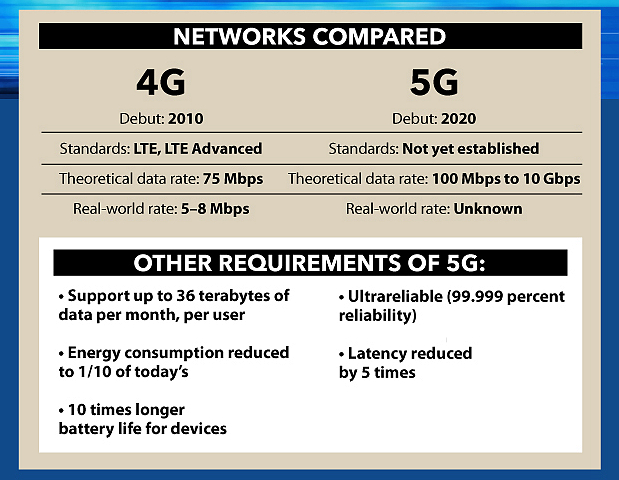5G networking is anticipated as the next major revolution for mobile technology, empowering customers with even faster data connections, opening up avenues to new industrial applications, and even helping to build widely connected “smart-cities”. It’s the crucial next step in better connecting our increasingly technological world, but there’s still plenty of legwork left to do before this all becomes a reality.
Around the world, companies and governments are working to iron out the finer points that will bring 5G mobile communication to the masses. Here’s the current state of the industry and what to expect going forward.

It’s all in the details
Despite quite a lot of talk about and investment going into 5G research, there still isn’t actually a globally defined specification for the technology. Organizations such as the International Telecommunications Union (ITU) and the Next Generation Mobile Networks Alliance (MGMN Alliance) have come up with ideal requirements for 5G networks, which include but aren’t limited to 1Gbps data speeds to simultaneous local users, lower latency, increased coverage, and improved power efficiency. However, as we know these ideal scenarios are unlikely to be what consumers end up seeing, and there’s still an ongoing debate about what the global 5G standard should actually look like.
One of the biggest obstacles is technology. Researchers and carriers are still weighing up the merits of various technologies and bits of hardware in order to reach the goals set out by these early 5G standards. Research into radio propagation of small millimeter waves and massive multi-input multi-output (MIMO) hardware is aiming to increase bandwidth up to the desired capabilities. Cellular repeater and macro-diversity techniques are being designed to solve problems with maintaining high bit rates across larger areas, as is research into device-to-device (D2D) connectivity. There’s also backwards compatibility to consider and the gradual phase in of 5G support. Hence why the industry is looking to standard evolutions like LTE Advanced Pro to bridge the gap.